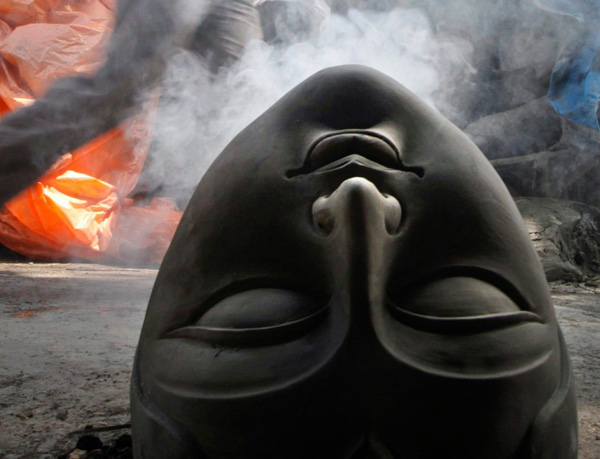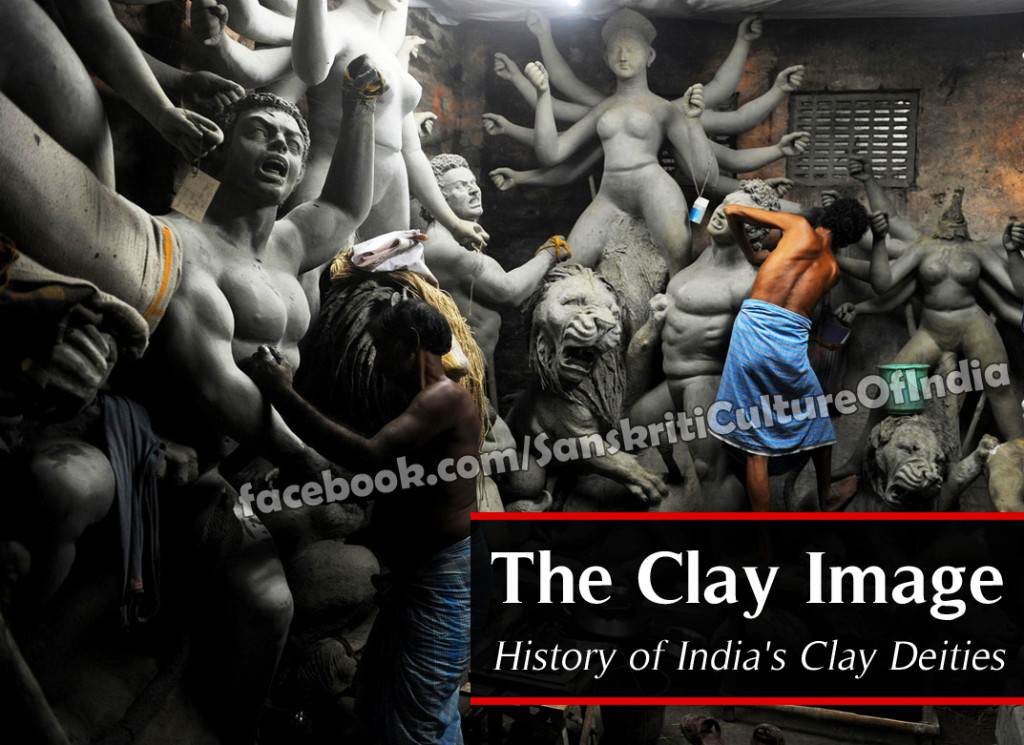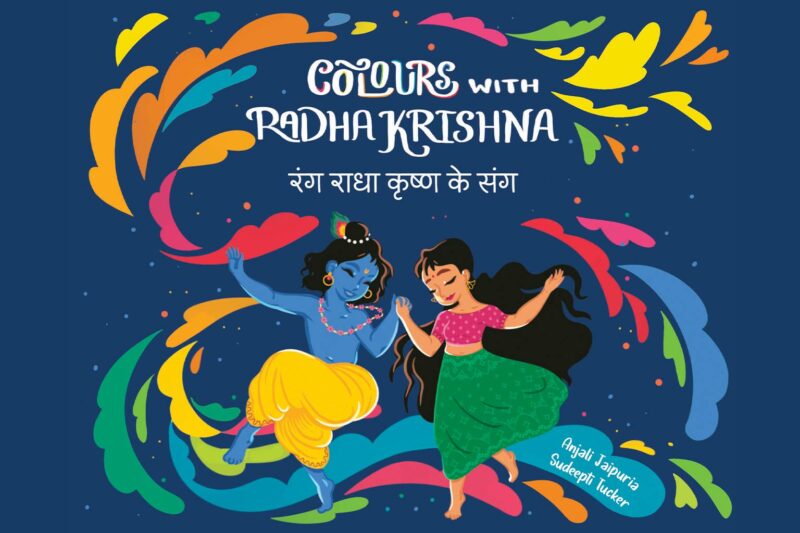Made of wood and clay.
He sees consciousness
Within the earthen-ness
And loses himself in it.”
~ Swami Vivekananda
The long tradition of clay image making in India is mentioned in the various “Silpa Sastras”, the canons of Hindu iconography, as well as several ‘Puranas’. Here are some research findings.
Why Clay?
Clay has always been included in lists of suitable materials for image making. Clay images that are to be used for worship are generally referred to as “mrinmaya” or “mrittika pratima”. The clay images are made using various kinds of clay over a frame of bamboo with the bulk of the figures being made initially from straw.
Terracotta Vs Terracruda
The clay must only be unbaked clay or “apakva” and rather than “terracotta” or fired clay. The clay is dried in the sun, maintaining the tradition of unbaked clay called “terracruda”. This may have links with fertility, and if the image is immersed in a river, the worshipper is in effect returning the earth from where it was taken originally.
A Complex Process
Clay images are complex and spectacular, take weeks to make and involve several figures set within a supporting framework. In the classical tradition, clay is applied in layers over a wooden frame and is done carefully over a period of time using a mixture of ingredients that some say has a symbolic significance, which equates the clay with flesh and the human body. In this the Indian tradition shares a common global belief that man is somehow connected with clay or the earth.
 Clay Images of Bengal
Clay Images of Bengal
In West Bengal, clay images can be found in shrines and temples as well as during the major festivals such as Durga Puja in the autumn. Many of these images are immersed in rivers and ponds after the festival though some are left under trees or out in the open to decompose naturally. The majority of images are of female deities such as Durga, Kali, Saraswati and Manasa although both Shaivas and Vaishnavas also use clay images for worship. This tradition started out as a village tradition that eventually became transformed in the urban environment.
History of the Worship of Clay Images
There are extensive records of the worship of clay images in West Bengal during the last two centuries and at least one account from the 17th c. There are also indications that the tradition may have been practised in the Pala-Sena period (8th-12th c) according to several ‘Sakta Upapuranas’ of the time. The worship of the clay image of Durga is mentioned in ‘Durgapujapaddhatis’ or manuals for Durga puja dating from the Muslim period of 13th-18th c. Also from this period are the lively mangal poems such as ‘Chandi Mangal’ and ‘Manasa Mangal’ from the 16th c onwards which refer to the worship of clay images of female deities in the villages of Bengal. In fact, it is likely that the current popular tradition of clay image making in Bengal had its roots in the Muslim period at a time when Bengali culture began to take on a distinctive form.
Kumartuli: The Creative Hub
When Calcutta was established as a major trade centre during the 18th c a group of clay image makers settled in what is now know as Kumartuli in the north of the city under the patronage of the landed gentry who were moving into the city themselves. Later, communal or ‘sarvajanin puja’ became popular and these now far outnumber those of the traditional families, which still preserve the old style images rather than the more modern style favoured by the popular market.
Seasonal Studios
Today, Calcutta has two main centres of clay image making: Kumartuli off the Chitpur Road, now known as Rabindra Sarani in the north and Kalighat in the south where the studios of the the “kumars” or sculptors sprawl either side of the Kalighat Road in the vicinity of the Kalighat temple. Their studios are generally no more than temporary work places for the kumars, many of who return home after the festival season to work as potters in villages. Most of the work is from September-December with a brief period during the spring after which the workshops are deserted.
A Fascinating Artform
In a way, little has changed since the 18th and 19th c. People are still prepared to spend a lot of money on clay images, the tourists continue to be fascinated by the images yet appalled to find that some of them end up in the river. Some of the Durga images made in Calcutta are exported worldwide for Bengalis living in Europe, Canada and the USA.
Kudos to the Kumars of Bengal
The kumars have still not achieved the recognition that their work deserves, especially in the city where this village skill has been transformed into an art form in its own right and where the kumars still prefer to call themselves artists rather than just kumars.
~By Dr. Jim Robinson, Oxford University











